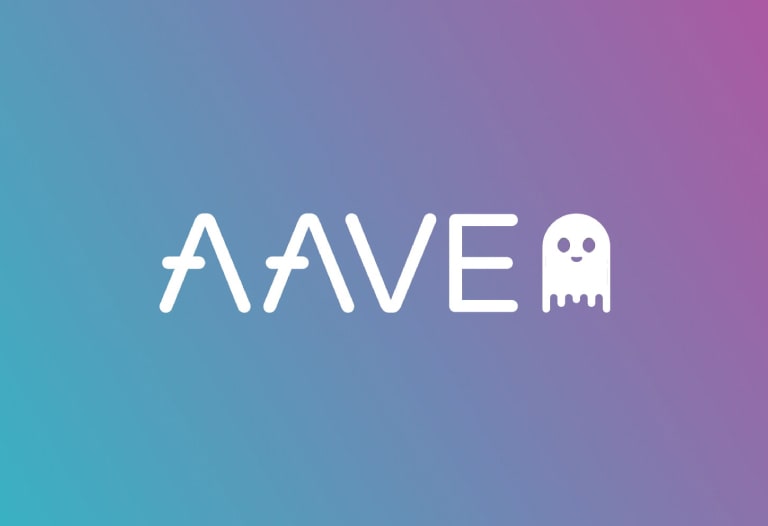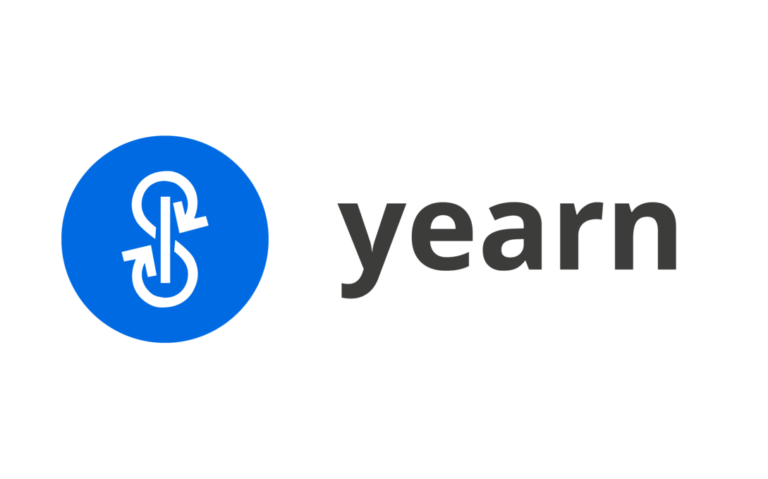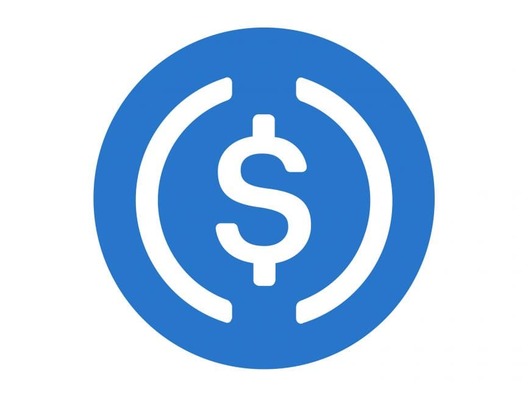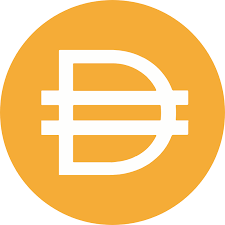The Ultimate DeFi Guide: All You Need to Know
DeFi is growing exponentially reaching a whopping $105 billion dollars locked on DeFi platforms. This kind of growth doesn't go unnoticed and today DeFi is one of the hottest fields in crypto today.
By the end of this post, you’ll have a good understanding of what DeFi is and understand the basic concepts that are essential for DeFi investing.
What Is DeFi?
DeFi, short for Decentralized Finance, is a movement that aims to create an alternative to the existing financial system. DeFi encompasses many financial platforms that don't have a central authority or intermediary. This is accomplished using blockchain technology. DeFi is a growing industry that took the initial innovation of Bitcoin and enabled the creation of open-source, interoperable financial tools. These tools allow the creation of a financial system that is more open and censorship-resistant than what exists today.
DeFi’s Advantages
DeFi offers many improvements to today's financial system. Let's look into some of them:
Efficiency: Did you know that currently, less than 1% of loans are made online? This is a testament to how stagnant the financial industry is today. DeFi aims to replace today's stagnant financial sector by building an open and decentralized financial system built for the internet age. All the services that DeFi platforms offer are automated and compatible with each other, allowing for new and inventive financial products.
Transparency: The system sits on top of the blockchain that is highly transparent. Blockchain technology allows users to know exactly how much money is on each platform at any given time. This transparency is a massive improvement to today's public companies that in the best case provide quarterly financial statements.
Equality: There are an estimated 1.7 billion adults that are currently unbanked and don't have access to essential financial services. DeFi platforms are accessible by anyone with an internet connection and a basic cellphone. This universal access flattens the playing field and gives farmers in third-world countries access to the same financial instruments as wealthy individuals.
DeFi Innovations
DeFi platforms leverage blockchain and smart contract technology to create new types of financial innovations and incentives.
Some of DeFi’s key innovations:
Liquidity Mining: A method by which users get ownership tokens (see governance tokens below) of the platform for using it. These token emissions incentivize users to use the platform which increases platform traction. In addition, users acquiring platform ownership ensures that interests are aligned between users and owners.
Yield Farming: A term used when users stake or lock up their crypto assets in a smart contract liquidity pool. They get compensated in the form of interest that is expressed as an annual percentage yield (APY). Platforms have an incentive for users to lock up their funds to ensure that the platform has liquidity and to attract new users. These incentives are sourced either from a percentage of transaction fees, or interest from lenders, or a governance token (see liquidity mining above).
DAOs (Decentralized Autonomous Organization): DAOs are internet-native organizations collectively owned and managed by their members. Decisions are made from the bottom-up, governed by a community organized around a specific set of rules enforced using the blockchain. The main objective of DOAs is to align interests between all network participants without the need to assume trust between parties.
Governance Tokens: Tokens that allow their holders to vote on platform decisions and shape their future. Since platforms don't want their governance tokens to be considered a security, platform profits aren't distributed to token holders. This makes it hard to determine their intrinsic value and makes them speculative by nature.
Staking: This is an action in which a user deposits his fund onto a smart contract to show his trust in the platform and gets rewarded, usually in the platform's native currency. For example, a user can stake on Aave (a lending platform) Safety Module. This module is used in the case where outstanding loans are greater than the platform's underlying collateral. Staking of funds in the Safety Module acts as a vote of confidence in the protocol and increases trust in the protocol. Staking allows for higher accountability for users vouching for a platform's soundness while still permitting anonymity.
DeFi's Main Building Blocks
Now that we have a better understanding of what DeFi has set out to achieve let's look at some of the different types of DeFi platforms.
Lending and Borrowing
 Aave DeFi lending platform
Aave DeFi lending platform
DeFi lending platforms allow users to borrow and lend without an intermediary using code. This greatly improves upon the existing legacy financial system.
These advantages include:
Better Yields: Banks profit from the spread between the yield they pay out to depositors and the interest they get from borrowers, that's all there is to it! DeFi removes the need for this intermediator, increasing the yield for depositors and reducing the cost for borrowers.
Permissionless: DeFi, lending platforms are run by code that can't discriminate, giving everyone equal access to financial services.
Transparency: In 2008, banks held in their reserves all sorts of dangerous financial instruments. DeFi platforms are built on the blockchain making them completely transparent. This allows investors to see what assets are used as collateral on these platforms.
The main DeFi lending platforms are Aave, Compound, and Maker.
DEXs
 Uniswap is the
biggest DEX platform in DeFi
Uniswap is the
biggest DEX platform in DeFi
Traditional centralized exchanges like the Nasdaq exchange and crypto exchanges like Binance use an order book system to match every buy order with a sell order. This order book system is computationally intense and would be too taxing to be done on-chain. This led to the invention of the AMM (Automated Market Maker). The AMM is a design where users provide a pair of tokens into a pool and provide constant liquidity. This pool acts as a counterparty to a swap between this token pair another user wishes to execute. DEXs short for Decentralized Exchange, use this AMM design to facilitate trades on their platforms. Main DEX's are Uniswap, Sushi, and Balancer. DEX's have several advantages to traditional exchanges, which include:
No Third Party: Centralized exchanges require users to send them their crypto to facilitate the exchange between crypto tokens. There are many cases in which exchanges were hacked, like Mt. Gox in which 750,000 bitcoin were stolen, or that exchanges ran off with users' funds like Africrypt alleged $3.6 billion robbery.
LP (Liquidity Providing): In traditional exchanges, MM (Market Makers) facilitate trading. They profit off of the spread between the bid and ask price. These MMs are big institutions that have advanced technology that enables low-latency trading. These requirements act as a barrier to entry for the average individual, and as a consequence, only a small group profits from this system. In the AMM design, any individual with a small amount of capital can LP and profit from it.
Censorship Resistance: Centralized exchanges decide which tokens they choose to list on their exchanges. This centralization goes against the core permissionless value that blockchain stands for. DeFi exchanges are decentralized platforms that allow anyone to list any token on the exchange.
Long-tail Of Assets: Order book exchanges can only list tokens with high trading volumes. This limits the amount tokens they can support. In contrast, AMMs don't have this limit allowing them to support many more tokens.
Investing
 Yearn Finance Logo
Yearn Finance Logo
Platforms that their primary objective is to facilitate user investing in an automatic and decentralized manner. There are many different strategies for generating profit in DeFi. Each platform has its own strategy to achieve this. These are some of the best DeFi platforms for generating profit:
Yearn - Before Yearn, users that wanted to Yield Farm (see part one of this series) would constantly move their funds from one platform to another platform offering a higher APY. Since the interest rate that platforms offer changes frequently, this is both time-consuming and expensive due to gas fees. Andre Cronje, a prominent figure in DeFi, came up with the idea of a platform that does this automatically, and since many users pool their funds together, it is more gas efficient.
Index Coop - A DAO that strives to be the BlackRock of crypto. They have many investment products, including leveraged tokens and index tokens. In the legacy investing world, Jack Bogle, who founded Vanguard, proved that the best way for an average investor to invest is to put his money in a passive index fund that charges low fees. Index Coop does the same thing with their Index tokens (i.e. DPI). DPI is a basket of Governance tokens (see part one) waited by market cap. With this product, an investor can gain exposure to all of DeFi in one DPI token. Instead of an investor betting on a few select platforms, an investor can easily bet on all of DeFi.
Stablecoins
Crypto assets are highly volatile assets. This volatility makes it hard to build financial infrastructure around crypto. The introduction of stable currencies - predominantly pegged to the US dollar - allowed for the creation of many financial instruments. There are three main types of stablecoins:
Fiat-backed stablecoins: Stablecoins fully backed 1:1 by US dollars. The collateral backing these stablecoins is deposited in bank accounts. The main risk with this type of stablecoin is centralization. It requires trust in a private company that they are fully collateralized. In addition, since the funds backing the stablecoins are deposited in regulated bank accounts there is the risk of governments confiscating the funds. The most widely used fiat-backed stablecoins are USDC and USDT.
 USDC fiat-backed stablecoin
USDC fiat-backed stablecoin
Crypto-backed stablecoins: Stablecoins backed by a basket of crypto assets. This basket consists of high-quality tokens that have a low correlation to each other. The advantage crypto-backed stablecoins have over fiat-backed ones is that they are decentralized, making them more censorship-resistant. Because of crypto's high volatility, these stablecoins need to be over-collateralized to ensure that even in periods of high volatility these tokens stay fully collateralized. This capital inefficiency is the main downside of this type of stable coin. The main crypto-backed stablecoin is Dai.
 Dai decentralized stablecoin
Dai decentralized stablecoin
Algorithmic stablecoins: A stablecoin that is only partially backed or not backed by anything. It has automatic algorithms that mint and burn the token to maintain its peg (one token being worth one US dollar). In theory, this would be both capital efficient and decentralized, but no such stablecoin proved to be robust enough to maintain its peg. Many such stablecoins blew up in the past. One algorithmic stablecoin that shows promise is UST from the Terra protocol.
 UST algorithmic stablecoin
UST algorithmic stablecoin
DeFi's Main Obstecales To Widespread Adoption
DeFi is rapidly growing both in users and in TVL (Total Value Locked) on platforms. This growth isn't without growing pains. These are some of the challenges that DeFi is facing today:
Security Risk in DeFi
DeFi is a new and untested frontier. As a result, there is an inherent risk when using these platforms. DeFi's biggest strength - using smart contracts to build financial products, is also a source of risk, allowing hackers to exploit the program's deficiencies. Risk mitigating platforms are essential for the success of DeFi.
Smart contract technology is new and developers don’t have enough history to learn from past mistakes. Hacks are common in DeFi, more than 1.4 billion dollars were hacked from DeFi platforms during 2021 alone. Hopefully, in the future, with the elution of industry security standards and risk-mitigating solutions, the percentage of funds hacked from DeFi platforms will shrink. Meanwhile, investors need to be aware of the risks involved when investing in DeFi and use risk-reducing solutions when investing.
Scaling
Victim of its success, the Ethereum blockchain, where the majority of DeFi activity is currently located, is congested with activity causing gas prices (the fee for transacting on Ethereum) to skyrocket. Ethereum is working on a substantial upgrade (see Eth 2.0 below) that might solve this issue. In the meantime, layer 2 solutions have emerged, reducing network congestion and cutting computation costs. Diving into details about layer2 is out of the scope of this post. I highly recommend you to read more about this issue.
Composability Beeteen Layer 2s
Due to DeFi projects moving to layer 2, it will limit the composability between projects. dApps on layer 1s can, in a single transaction, interact with multiple DeFi protocols. This enables the creation of brand-new financial products like Yearn and Balancer. On Layer 2, platforms can only make transactions between other protocols that exist on the same chain. There is a need for cross-layer 2 composability solutions. For example, cross-layer 2 liquidity solutions.
Collateralization
As of today, DeFi lending platforms require users to over-collateralize when borrowing. This is not capital efficient and is one of the few disadvantages that DeFi has to traditional finance. Under-collateralized lending requires trust, which is hard to build with blockchain anonymity. One of the interesting solutions is users building a pseudonyms credit score.
After describing some of the challenges facing DeFi in near future, we will look into some of the promising developments that are being worked on today.
Future Development in DeFi:
After looking at some of the challenges DeFi is facing today There is a lot to look forwards to in the near future.
Ethereum 2.0
An upgrade of the Ethereum blockchain infrastructure. Ethereum 2.0 will implement substantial improvements to the existing Ethereum blockchain including:
Sustainability: In the Etherem 2.0 upgrade the system will switch from a PoW (Proof-of-Work) consensus algorithm similar to that of Bitcoin to PoS (Proof-of-Stake). PoS is much more energy-efficient and has substantially fewer environmental implications.
Scalability: Ethereum 2.0 will implement sharding. Sharding is the process of splitting the Ethereum main blockchain into 64 different “sub-chains” called shards. This process will substantially improve Ethereum transaction speed.
Security: The move to PoS consensus in Ethereum 2.0 will improve the overall security of the network.
Other Layer 1s
As of today, almost all of the DeFi ecosystem is located on the Ethereum blockchain. There was a lot of talk during late 2020 and early 2021 about "Ethereum killers". These are layer 1s that claimed to be better alternatives to the Ethereum blockchain. The main category these alternative blockchains tried to compete with Ethereum on was tx speed. Layer 2 is already here, and Eth 2.0 might altogether solve this problem, making a possible "Eth killer" even less likely. The most likely scenario, in our opinion, is a multi-chain world in which there are several blockchains, each with different pros and cons. Ethereum has the first-mover advantage and will likely stay one of the most dominant chains. Other blockchains, notably Solana, Polkadot, Cardano, and others, will probably manage to take some of Ethereum's market share.
Cross-Chain Liquidity and Interoperability
As a consequence of a multi-chain world, chains will have to develop ways to communicate with each other and transfer assets between each other. These are some of the projects tackling this problem today:
Cosmos: They call themselves the internet of blockchain. They strongly believe in a multi-chain world where every project will run on its own specialized blockchain tailored for its need. Cosmos developed the Inter-Blockchain Communication (IBC) protocol to enabling different chains to transfer data and information from one to another.
ThorChain: A project that allows users to transfer native tokens from one blockchain to another in a decentralized manner without the need to wrap them.
Polkadot: A blockchain protocol with two goals: providing shared security among all connected sub-blockchains and allowing all connected chains to communicate and interoperate with each other using XCM.
Conclusion
If you made it this far, good for you! you now have a basic understanding of DeFi. All that's left is for you to open a Metamask account, buy some ETH, and start using DeFi. DeFi is growing rapidly and has the potential of not only replacing the existing financial system but also improving upon it and enabling products and services that we can't even imagine today.
,